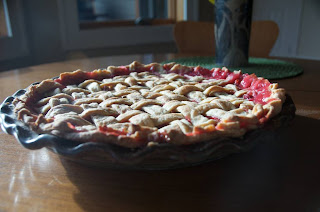It’s been so hot and dry this summer here in northern Wyoming
But there are good things, too. Because of the mild spring, blossoms escaped frost and there seemed to be plenty of bees around to pollinate. Now the wild plum bushes are covered with fruit; thick clusters of rosy plums that almost look like grapes, there are so many. There were service berries in July, and I just managed to pick a bushel-full of chokecherries last week to make wine before the raccoons and robins stripped the bushes. If you follow the water-ways this time of year, you can often find huge piles of raccoon scat, consisting almost entirely of chokecherries or plums.
One plant in abundance right now is a pretty yellow composite flower called curlycup gumweed, (Grindelia squarrosa).
The plant can reach three feet in height; the leaves are slightly toothed and spade shaped, and the many sticky flowers are surrounded by pincushion-like bracts.
|
|
The plants often grow in poor soil and are blooming everywhere right now in our area.
|
Clip the flowers and dry them in a tray lined with paper towels, out of the sun. Always be sure to dry herbs away from sunlight and heat.
Another use for gumweed I read about recently was as a topical poultice to relieve poison ivy. I’m all for anything that helps with that! Either crush the fresh flowers and apply them directly to the skin, or make a tincture by putting the flowers in witch hazel or grain alcohol. You can let the flowers steep in the liquid for several weeks, and then strain out the plant. Your tincture, kept away from heat and sunlight, will last a long time.
< ~ > < ~ > more < ~ > < ~ >
I also want to mention the humble wild yarrow plant, (Achillea lanulosa), which is found in abundance everywhere right now.
The leaves are fine and fern-like and the flowers are white and flat-topped.
|
The scent is woodsy and somewhat balsamic.
|
Both these flowers are worth gathering and drying now to prepare for cold and flu season.
< ~ > < ~ > more < ~ > < ~ >
In the garden it seems like summer squashes and cucumbers have taken over, while we in northern Wyoming all hope for a late frost so the winter squash and tomatoes can have a fighting chance at ripening. Here are two great recipes that will use up some of that extra produce.
1. TZATZIKI- Greek cucumber dip from, Keri Paninos
Peel and slice length-wise 4 cucumbers and take out the seeds. Loosely chop the cukes
Add to 2 cups of Greek yogurt, (whole-milk yogurt is better!)
2 crushed and chopped cloves of garlic
1 tablespoon lemon juice and 1 tablespoon olive oil
1 tablespoon fresh dill and 1 tablespoon fresh minced mint
Salt and black pepper to taste
Chill
Use this terrific dip over stir- fries, on roasts or with pita bread sandwiches
2. ZUCCHINNI FRITTERS- from Pricilla Meyer
2 cups coarsely grated zucchini
½ cup flour
1 tablespoon baking powder
½ cup grated parmesan
Salt and pepper and maybe a pinch of herbs of your choice
2 eggs separated
Mix everything together except the egg whites. Beat the egg whites separately until they form soft peaks and then gently fold them into the batter
Drop by large tablespoons onto a hot skillet greased with olive oil. Cook fritters over medium heat, turning once when golden brown.
This is a delicious thing to do with all that zucchini. Serve with sour cream and salsa
< ~ > < ~ > more < ~ > < ~ >
There is one more garden plant I want to mention.
A wild green called Common Purslane, Portulaca oleracea (also known as Verdolaga, Pigweed, Little Hogweed, or Pusley.
|
Most people consider this plant a garden pest as its succulent-like oval leaves tend to spread in a mat, making it somewhat invasive.
|
But purslane is one of the few plants that contain omega-3 (highly unsaturated) fatty acids. That’s the good kind of fat that helps reduce inflammation and protect the body in other ways. The only other plants I know of containing omega-3’s are flax and hemp. When I was down in the jungles of Michoacán, purslane was often thrown into an egg scramble or stir fry. It’s good thrown into a salad, too. Give it a try. You’ll be surprised!
\ < ~ > < ~ > nuf for now < ~ > < ~ > /




.jpg)